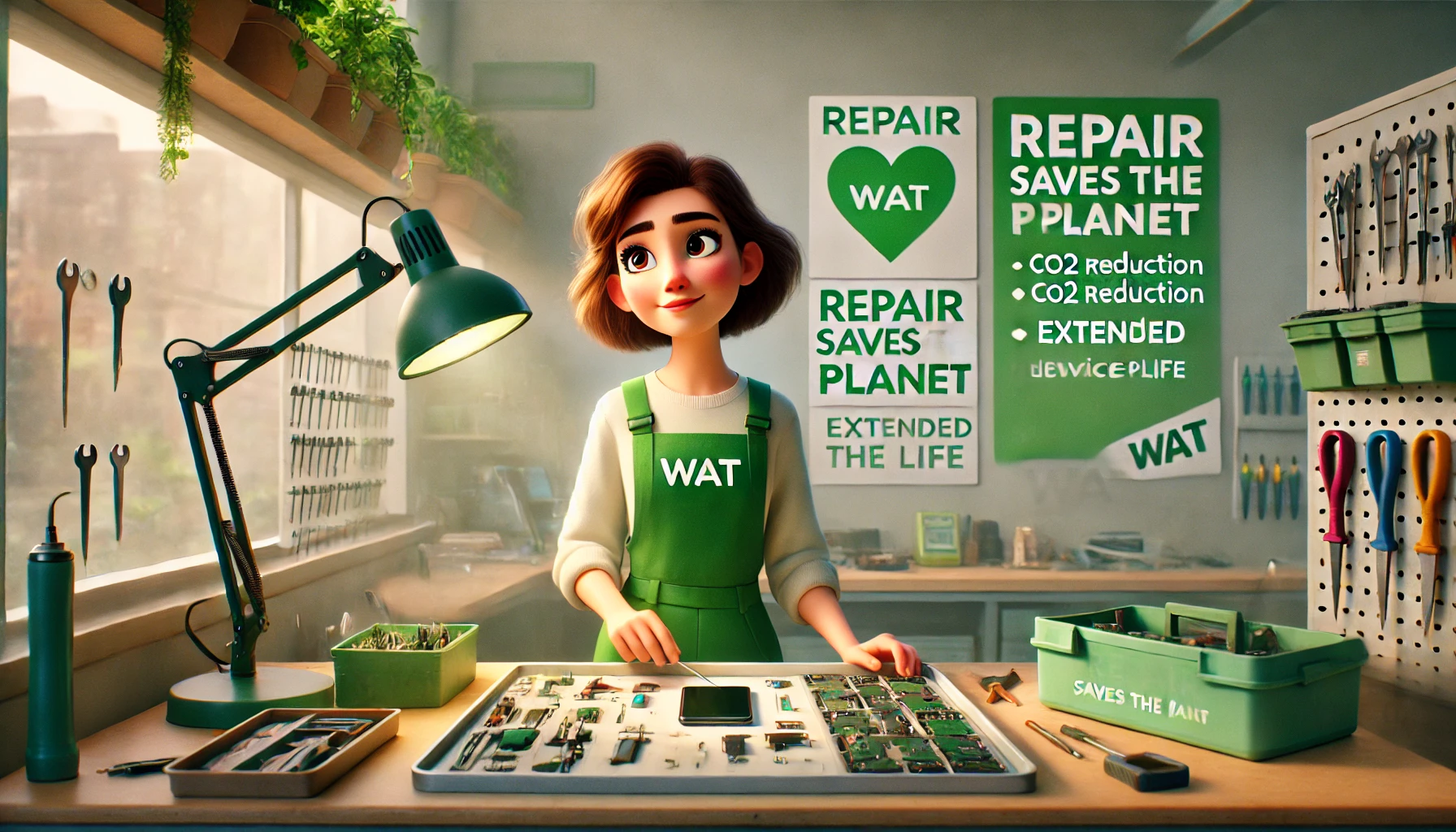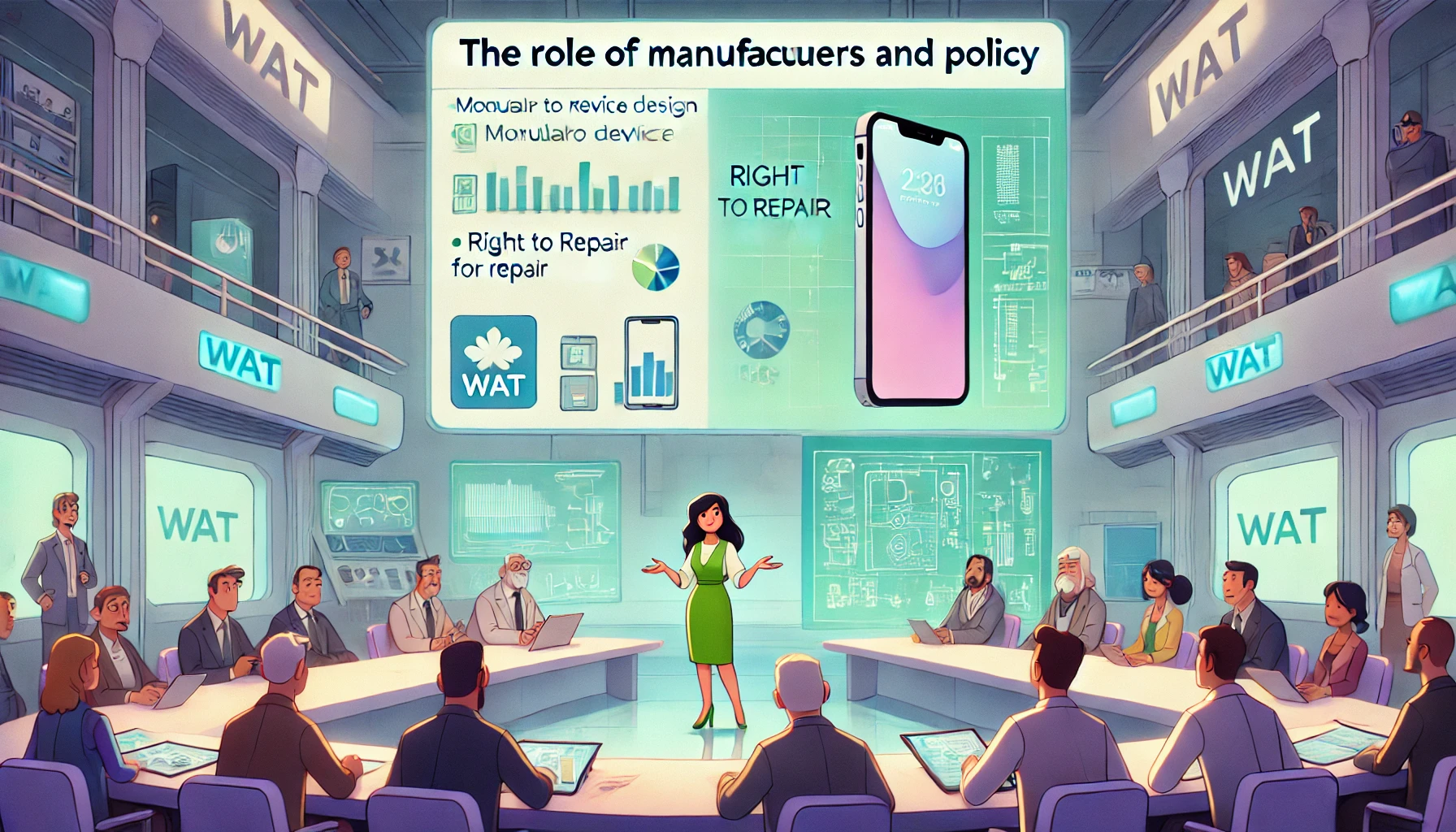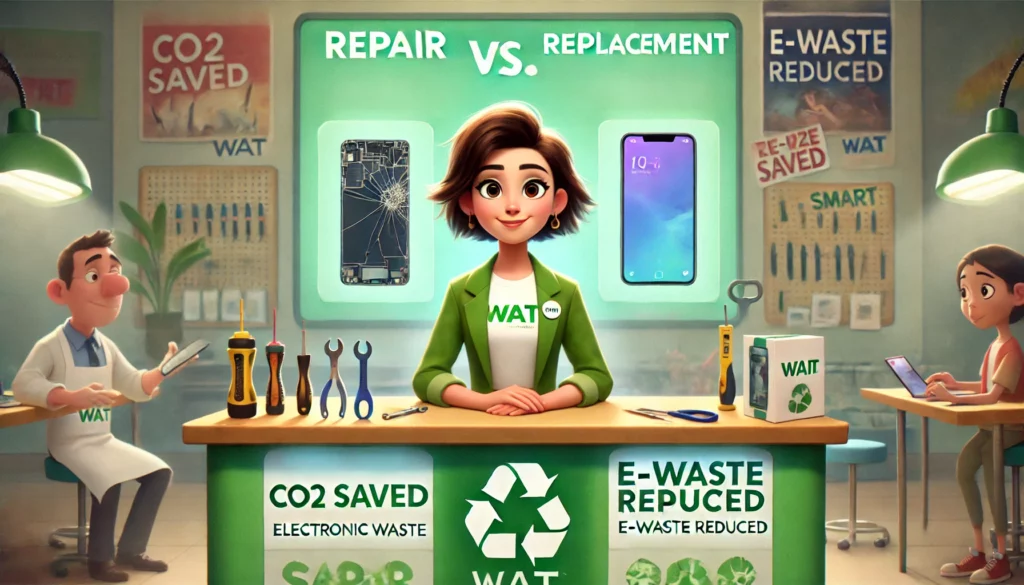In a world driven by rapid technological advancements, our gadgets have become more than just tools, they are extensions of our daily lives. Yet, the question of what to do when a device breaks down has become increasingly relevant. Should you repair it, or simply replace it with the latest model? This decision not only impacts your wallet but also has far-reaching consequences for the environment.
The Growing Challenge of Electronic Waste (E-Waste)
E-waste, or electronic waste, refers to discarded electronic devices such as smartphones, laptops, televisions, and home appliances. According to the Global E-Waste Monitor, over 60 million metric tons of e-waste are generated annually, with only 17% being properly recycled. The rest often ends up in landfills, releasing harmful chemicals into the environment and wasting valuable materials like gold, silver, and rare earth metals.
This growing problem is exacerbated by the culture of disposability and the allure of new technology. However, repair offers a practical and sustainable alternative that can significantly reduce the e-waste crisis.
Repair: A Sustainable Solution

Repairing electronic devices involves fixing or replacing faulty components to restore functionality. While it may seem like a simple concept, its environmental benefits are profound.
1. Extending the Product Lifespan
Repairing a device means keeping it in use longer, delaying the need for replacement. This reduces the demand for new manufacturing, which is resource-intensive and energy-consuming. For example, repairing a smartphone’s cracked screen or replacing its battery can add years to its usability.
2. Conserving Resources
Manufacturing new electronics requires extracting raw materials, including rare earth metals, which are finite and difficult to mine. Repair minimizes the need for these resources by reusing existing products.
3. Reducing Carbon Emissions
The production of electronic devices contributes significantly to greenhouse gas emissions. By opting for repairs, you’re cutting down on the carbon footprint associated with manufacturing and shipping new devices.
4. Cost Savings for Consumers
Repairing is often more affordable than replacing, especially for minor issues. Many manufacturers now offer repair services or sell replacement parts, making it easier for consumers to choose repair over replacement.
The Case for Replacement: When It’s Necessary
While repair is generally the more sustainable option, there are cases where replacement might be unavoidable:
- Severe Damage: If a device is beyond repair or the cost of repair exceeds its value, replacement may be the only option.
- Energy Efficiency: Older devices may consume more energy than newer, more efficient models. In such cases, upgrading can reduce your energy consumption and overall environmental impact.
- Obsolescence: Some devices become outdated due to software incompatibility or lack of support from manufacturers, making them impractical to repair.
The Role of Manufacturers and Policy

To make repair more accessible, manufacturers and policymakers must play a role.
1. The Right to Repair Movement
This global initiative advocates for laws requiring manufacturers to provide repair manuals, tools, and affordable replacement parts. By empowering consumers and independent repair shops, the movement aims to make repairs easier and more affordable.
2. Designing for Repairability
Manufacturers can design devices with modular components that are easy to replace or upgrade, reducing the need for complete replacements.
3. Incentives for Repairs
Governments and businesses can offer incentives for repairs, such as subsidies, tax credits, or trade-in programs that encourage consumers to repair rather than replace.
How Consumers Can Make a Difference

1. Assess Before You Replace
Before discarding a device, evaluate the cost and feasibility of repair. Even minor repairs can significantly extend its lifespan.
2. Support Repair-Friendly Brands
Choose brands that prioritize repairability and offer spare parts or repair services. Websites like iFixit provide repairability scores for various devices, helping you make informed decisions.
3. Educate Yourself
Learn basic repair skills to handle minor issues. Online tutorials and community workshops can empower you to fix devices instead of discarding them.
4. Recycle Responsibly
If repair isn’t an option, ensure your old device is recycled responsibly. Many retailers and manufacturers offer recycling programs to safely dispose of e-waste.
Repair vs. Replacement: A Balanced Approach
While repair is a powerful tool for reducing e-waste, it’s essential to balance sustainability with practicality. By making informed decisions and advocating for repair-friendly policies, we can collectively reduce the environmental impact of electronic devices.
In the end, choosing repair over replacement isn’t just about saving money—it’s about saving the planet. Let’s embrace a culture of sustainability, where the decision to repair becomes second nature, and electronic waste is a problem of the past.
